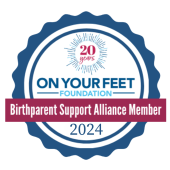How to Adopt a Child – A Simple Guide for First-Time Parents

For anyone asking how to adopt a child for the first time, it’s easy to feel overwhelmed by what seems like a maze of paperwork, legal steps, and emotional decisions. But it doesn’t have to be confusing. We’ve broken everything down into a straightforward, supportive guide to help first-time parents understand the adoption process without the pressure or jargon.
We understand how important this step is, not only for building a family, but also for ensuring the child involved is placed in a loving, stable home. That’s why this article will walk through the full process with clear explanations, honest insights, and guidance that puts people first.
Let’s begin with the basics of how to adopt a child and the key things to prepare before you even fill out your first form.
How to Adopt a Child: First Things to Know
Adoption involves more than checking a box. It requires emotional, financial, and logistical readiness. If you’re asking how to adopt a child, most families start with honest reflection and practical preparation.
Before contacting any private adoption agencies or researching the adoption process steps, it’s helpful to take a closer look at your own motivations and expectations. Are you open to different types of adoption? Are you prepared for potential delays or emotional ups and downs? These are the real questions that deserve attention early on.
There are several types of adoption you might consider:
- Domestic Infant Adoption – often through private adoption agencies
- Foster Care Adoption – through the State
- International Adoption – which includes additional legal and travel requirements
- Kinship or Relative Adoption – adopting a child you already know and may be related to
Each path comes with different timelines, costs, and legal processes. What remains consistent across all of them, however, is the need for a home study, education, and a strong support system. The better prepared you are upfront, the more confident and calm you’ll feel throughout the process.
What Is the First Step to Adopt a Child?
The first step to adopt a child is deciding which type of adoption fits your family’s needs and contacting a licensed adoption professional. That could be a local social worker, a private adoption agency, or a licensed attorney with adoption experience.
This early step includes an intake conversation or consultation. It’s where potential adoptive parents ask questions and learn what’s required based on the type of adoption they choose. Most professionals will give a general timeline, explain required documents, and introduce the idea of a home study.
During this phase, it’s a good idea to:
- Write down your goals for adoption
- Ask each agency or provider about fees, timelines, and support
- Start gathering documents you’ll need later (birth certificates, financial statements, references)
- Get clarity about age preferences, openness to siblings, or adopting children with medical needs
If you’re working with private adoption agencies, many will help prepare you for what comes next. This stage is also when hopeful parents begin mandatory training or adoption education, usually required by state law or the agency. These sessions are incredibly valuable, helping prepare parents emotionally and logistically for welcoming a child into their home.
What to Expect During the Home Study
Every family hoping to adopt must complete a home study. It’s a required part of the legal process and one of the most important adoption process steps. A home study helps confirm that a child will be placed in a safe, stable, and nurturing environment.
The process typically includes:
- A series of interviews with a licensed social worker
- Home visits to assess safety, space, and family readiness
- Background checks for all adults in the home
- Health and financial documentation
- Personal references
Expect the home study to take a few weeks to a few months, depending on how quickly you can submit documents and schedule interviews. The social worker assigned to you will ask questions about your upbringing, relationships, parenting philosophy, support systems, and lifestyle.
Private adoption agencies often provide support during the home study by helping organize paperwork and preparing you for interview questions. They may also offer training to better understand adoption-related trauma, cultural identity, and how to support a child adjusting to a new environment.
Creating an Adoption Profile
Your adoption profile is a central part of the matching process, especially in domestic infant adoption through private adoption agencies. It’s a booklet or digital presentation that introduces you to expectant birth parents considering adoption.
A well-made profile includes:
- Photos of your family, home, and daily life
- A letter to the birth parents
- Details about your values, hobbies, and parenting goals
- Information about your extended family, neighborhood, and pets (if any)
This is not about being perfect. It’s about being authentic. Birth parents are looking for someone they feel emotionally comfortable with. They want to feel reassured that their child will be loved, respected, and cared for long-term.
If you’re working with a licensed agency, they’ll often guide you through building your profile. Some even have designers or writers to help present your story in a way that’s heartfelt and sincere.
It’s also during this stage that you’ll talk about your preferences and level of openness, meaning how much contact you’re willing to have with the birth family after placement. That could include letters, pictures, phone calls, or in-person visits. Each adoption is different, and these decisions are personal.
Being honest about your comfort level helps agencies match you with a situation that fits your expectations and the child’s best interests.
Waiting for a Match
After your profile is complete and your home study is approved, the wait begins. For many first-time parents asking how to adopt a child, this is the most emotionally challenging phase.
There’s often no clear timeline. Some families are matched within a few months while others may wait for a few years. It depends on the needs of the children available for adoption, the characteristics you’re looking for in a child, and the preferences of the birth parents.
Here’s what helps during this season:
- Stay in regular contact with your agency or attorney
- Join local or virtual support groups
- Focus on preparing your home and lifestyle
- Keep your documents and contacts updated
If you’re pursuing foster care adoption, the wait may be shorter, but placements can come with less notice. In this case, it’s especially important to stay organized and emotionally prepared.
Many families find that private adoption agencies provide updates and check-ins throughout this period. They’ll let you know if your profile is being shown and offer guidance on what to do next.
As you continue moving through these adoption process steps, it’s okay to feel anxious. This is a time of waiting and hoping, but also of preparing to meet the child who may soon become part of your family.
Placement and Finalization
Once you’re matched with a child or birth parent, the next major milestone is placement, the day the child officially comes into your care. This is one of the most emotional and meaningful steps in the adoption process, but it’s also a legal process with specific requirements to fulfill.
For domestic infant adoptions, placement usually occurs shortly after the baby is born. Birth parents must legally consent to the adoption, and the waiting period for that consent varies by state. Once consent is signed, the child is officially placed with the adoptive family.
For foster-to-adopt or kinship cases, the timeline is a bit different. The child may already be living in your home, and placement is considered complete once the court finalizes the decision and parental rights have been legally terminated.
In most types of adoption, a few things must happen between placement and finalization:
- Post-placement visits by your social worker (often required by the state)
- Continued communication with your agency or legal representative
- Filing court documents to request a final adoption hearing
Your adoption agency or attorney will guide you through filing the correct paperwork. This monitoring step helps ensure that both you and the child are adjusting well and that the placement is healthy and stable.
Once all steps are complete, the court will issue a final decree of adoption. This is the moment your child becomes a permanent member of your family. The child’s name may be changed, and a new birth certificate can be issued.
This day is often celebrated by families with a small gathering or private moment of reflection. But for many, it also marks the beginning of another important chapter: parenting after adoption.
How Long Does It Take to Adopt a Child?
Adoption timelines vary widely, but on average, it can take anywhere from six months to several years to adopt a child, depending on the type of adoption and the child’s background.
The biggest factors that influence timelines include legal proceedings, paperwork completion, home study approval, and the time it takes to match with a child.
Working with responsive and experienced private adoption agencies can sometimes speed up certain steps, as they help keep documents organized and guide parents through compliance requirements.
One important piece of advice: patience here isn’t just necessary, it’s protective. Every delay serves a purpose, such as ensuring the child’s best interests are met or confirming that all legal rights are properly transferred.
Ready to Learn How to Adopt a Child? Let’s Take the First Step Together
Adoption can feel complicated at the start, but it becomes more manageable when broken into steps and supported by the right people. Knowing how to adopt a child involves more than paperwork; it’s about preparation, trust, and choosing to build a family with care.
Whether you’re just getting started or already waiting for a match, staying informed and supported is the best thing you can do for yourself and for the child who may one day call you family.
If you’re wondering how to adopt a child or looking for honest, experienced support, we’re here to help. At the Adoption Center for Family Building, we’ve worked with hundreds of adoptive families and birth parents to build loving, lifelong connections.
Our licensed staff can walk you through every part of the process, from the first questions to post-adoption support. For a private consultation or to ask your first question, contact us today.





